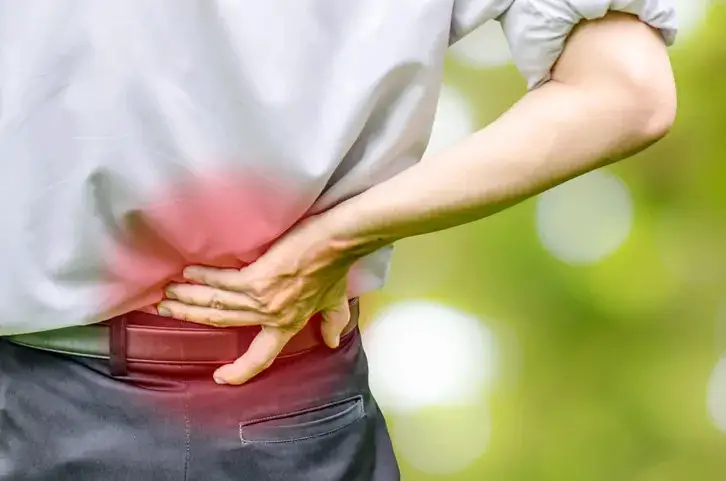La lumbar scoliosis is the most common scoliosis in adults. It's about a deviation from the lumbar spine causing bothersome and painful symptoms in the most severe cases. Discover in this article everything you need to know about the lower back scoliosis.
Some general information about scoliosis
La Scoliosis is defined by a deformation of the spine in a three-dimensional plane: frontal, sagittal and horizontal plane. This deviation can be located throughout the spine, but it affects more the region dorsal et lumbar.
The causes of the pathology can be congenital, syndromic ou idiopathic.
And, in terms of its severity (mild and severe), it is assessed with Cobb's angle. This is what also makes the difference on the various symptoms: change in appearance, functional limitations, neurological disorders, respiratory disorders and psychological impacts.
Scoliosis is very different from the scoliotic attitude. The latter is not permanent.
If you want to know more about scoliosis, click here.
Focus on lumbar scoliosis
La lumbar scoliosis is a scoliosis whose branch direction is lateral.
This type of scoliosis affects a specific part of the spine. the lumbar region which is located in the lower back.
Lumbar scoliosis can appear during childhood and adolescence. It can also affect adults from 40-50 years old. That's what we call degenerative lumbar scoliosis with a Cobb angle of 10˚.
The causes of lumbar scoliosis
Lumbar scoliosis has the same risk factors as generalized scoliosis. Most of the time she is idiopathic.
However, it also has factors that are specific to it. We can cite :
- lumbar osteochondrosis;
- prolonged muscle spasms;
- pelvic tilt;
- degeneration of para-vertebral musculo-ligamentous elements;
- wear of discs (degenerative disc disease) or joints (lumbar arthritis).
other causes also promote lumbar scoliosis. For example, we count: significant deformation, difference in length of the two legs, carrying of inappropriate loads, herniated intervertebral discs, overweight, sedentary lifestyle...
The consequences and symptoms of lumbar scoliosis
Apart from the symptoms of scoliosis in general, lumbar scoliosis also has its own characteristic symptoms.
Le pinching of nerve roots in the spine is one of the symptoms of lumbar scoliosis. It induces significant pain in the leg. The patient suffering from this type of scoliosis may experience lower back pain on the side of the convexity.
Degenerative lumbar scoliosis, on the other hand, manifests itself as a postural disorder. Nerve roots and spinal cord may be compressed. We also notice the sliding of a lumbar vertebra forward “ spondylolisthesis ».
To know everything about spondylolisthesis, see the following article.
Lumbar scoliosis treatment
Like any type of scoliosis, the lumbar scoliosis treatment must be quick and multidisciplinary.
The purpose of the treatment is to limit the aggravation of the deviation, to try to bend the spine to the left and above all to relieve the pain caused by scoliosis.
Various treatments can be offered such as:
- orthopedic treatment;
- a corset to maintain the spine;
- rehabilitation with a physiotherapist;
- surgery in case of “significant scoliosis”.
When the patient experiences acute pain, the drug treatments are essential: analgesic drugs and anti-inflammatory drugs (for adults).
In the case of degenerative scoliosis, surgical treatment is often the treatment of first resort. For good reason, this form worsens and intensifies over time and sometimes causes pain.
References
https://www.futura-science.com/sante/definitions/medecine-scoliose-lombaire-15059/
https://docti-posture.com/scoliose-cause-symptomes-traitements/


